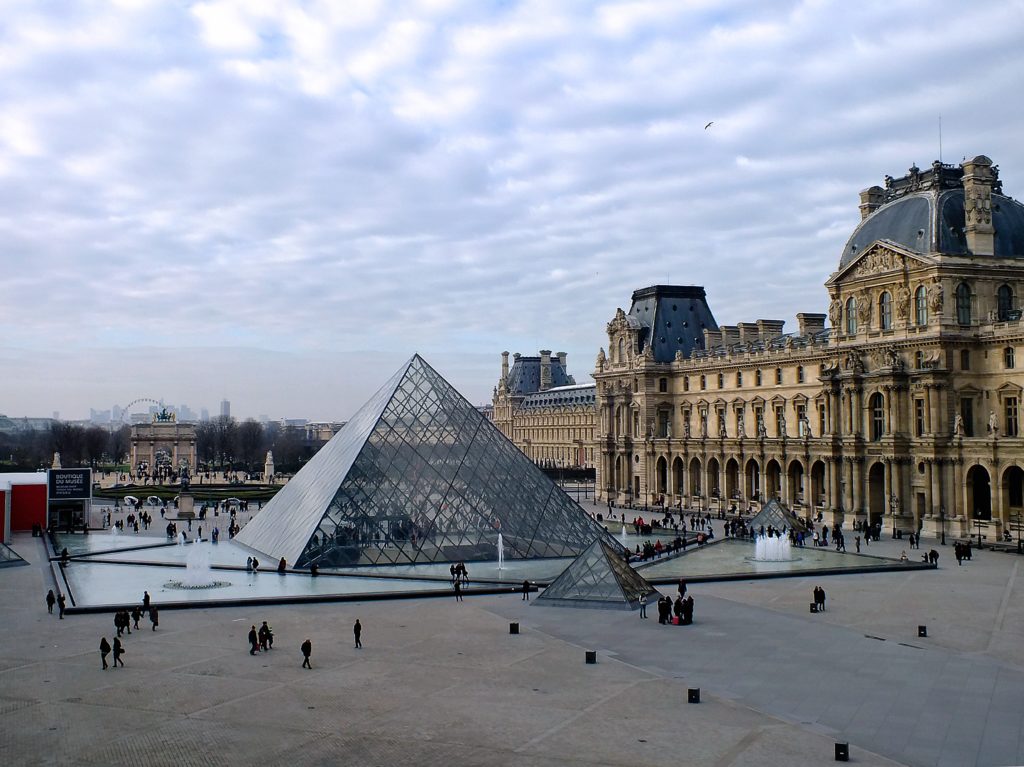I was watching Sherlock Holmes ‘The Final Problem’ the other day, a classic tale which ends with the famed struggle at the Reichenbach falls. Anyway, the episode begins with Holmes securing the return of the Mona Lisa from the grasping Fagin-like hands of Moriarty. Although the story originally appeared in the Strand magazine in 1893 there was prescience to Conan-Doyle’s suggestion that one of the most famous works in the world would go missing.
I was thinking about Mona Lisa and the fame of this painting. These days, when I take groups to Paris I will ask them which gallery they might visit if only allowed time to go to one – invariable the Louvre gets many mentions. When pushed as to which one piece of art they might want to see (if so limited) while in the Louvre then Mona Lisa gets many more votes. When asked why I generally get a lot of people saying ‘because it’s famous.’ And why is it famous? Well, partly because most people would choose it as their one piece to see if only allowed in one…..you get the idea.
So why is it so famous?
On the morning of 22 August, 1911, Louis Béroud, a Parisian artist who made his living by copying famous paintings for the tourist market, arrived at the Salon Carré in the Louvre to paint the Mona Lisa. To his surprise and annoyance, he found only a bare wall and four iron pegs where the painting usually hung. Béroud’s concern was dismissed by the guard – the Louvre had recently installed a photo studio and he guessed it was being photographed again or perhaps even having its frame repaired. Béroud waited a few hours until, growing impatient, he bribed the guard to go and see how long the photographer was planning to be. The guard disappeared up to the studio and then returned a few minutes later looking pale. The painting wasn’t there. Moreover, since the museum had been shut the previous day, no-one had seen it since Sunday. It had been stolen.
By early afternoon sixty inspectors and more than one hundred gendarmes were at the museum. They bolted the doors, questioned those inside and stationed guards at the entrances (I would have gone for an exit myself). For an entire week the museum was searched from top to bottom. One of the head directors was fired while another was suspended.
The Prefect of the Paris Police, Inspector Louis Lepine, finally took charge. Based on interviews with museum staff, including everyone who had ever worked at the museum, and the scant evidence found at the scene, he pieced together a reconstruction of the theft. But for all his efforts, Lepine has no hard leads. At the same time, word of the theft was spreading around the city, people lined up to see the space where the Mona Lisa once stood. It was this capturing of the public imagination that has so much to do with the fame of the piece. Rewards were offered – 25,000 francs by the Louvre; 40,000 francs by the magazine L’Illustration. In desperation, the newspaper, Le Matin, even offered 5,000 francs to clairvoyants and fortune tellers to divine the painting’s whereabouts using their contacts in the spirit world. Famous music hall and theatrical stars were photographed posing as Mona Lisa, and there was a sudden boom in (possibly) hilarious postcards bearing her image.
On December 12, 1913 the painting was found in a hotel room in Florence. The room was being rented by former Louvre worker Vincenzo Peruggia, who was promptly arrested and sent to prison, where he served 14 months. To steal the painting, Peruggia hid in the museum on the Sunday night, knowing that it would be closed to the public the next day. On Monday morning, wearing his employee uniform, he hid the Mona Lisa under his clothes and walked out of the Louvre unchallenged. He kept the painting in his apartment in Paris for two years before trying to sell it to an art dealer in Italy; the dealer had subsequently informed the police.
And so the fame of this already much admired work was secured. Critics have questioned its fame based purely on content. I sometimes wonder if, when looking at the Mona Lisa, I am actually looking at the painting or just seeing something which is so famous that it is already familiar to me. It is almost impossible to see this painting with neutral eyes. Either way, Sherlock Holmes would have wrapped up the case in a few days.
(Editor’s note: Add Paul on Google+ If you have a question about for EF Tour Director Paul Mattesini, or an idea for a blog post topic, you can email Paul here, and he will answer readers’ questions in future blog posts.)
Related articles


